
Hope for a huge, ancient and imperilled fish
First Nations are leading efforts to make sure lake sturgeon can find a home in...
Decades after closing, an open-pit copper mine in northwest B.C. is still discharging wastewater with metal concentrations 250 times higher than what’s considered safe for salmon into Babine Lake, the sockeye salmon engine of the Skeena River watershed, according to a new report by SkeenaWild Conservation Trust and Lake Babine Nation. And the situation at the Granisle mine — one of two decommissioned mines on the lake — is indicative of what’s happening across the province.
“People are particularly concerned about the health of the lake because of its importance for sockeye salmon production in the watershed,” Adrienne Berchtold, co-author of the report, told The Narwhal.
Babine Lake, the longest natural lake in the province, is an important nursery habitat for 30 populations of sockeye salmon. About 90 per cent of all sockeye salmon in the Skeena watershed start their lives there. The Skeena sockeye population has declined about 70 per cent over the past 100 years, according to Simon Fraser University researcher Michael Price.
Two decommissioned mines owned by Glencore Canada — Granisle and Bell — have been discharging wastewater contaminated with metals into the north end of Babine Lake since they were operational. Granisle operated from 1966 to 1982 and Bell from 1972 to 1992.
The release of mining contaminants has negatively affected water, sediment and fish, according to the report. For instance, bottom-dwelling fish have persistently elevated levels of copper in their bodies, which affect their ability to smell — a sense they rely on to find food and avoid predators. The situation has worsened in recent years and the most polluted fish are always found closest to the mines.
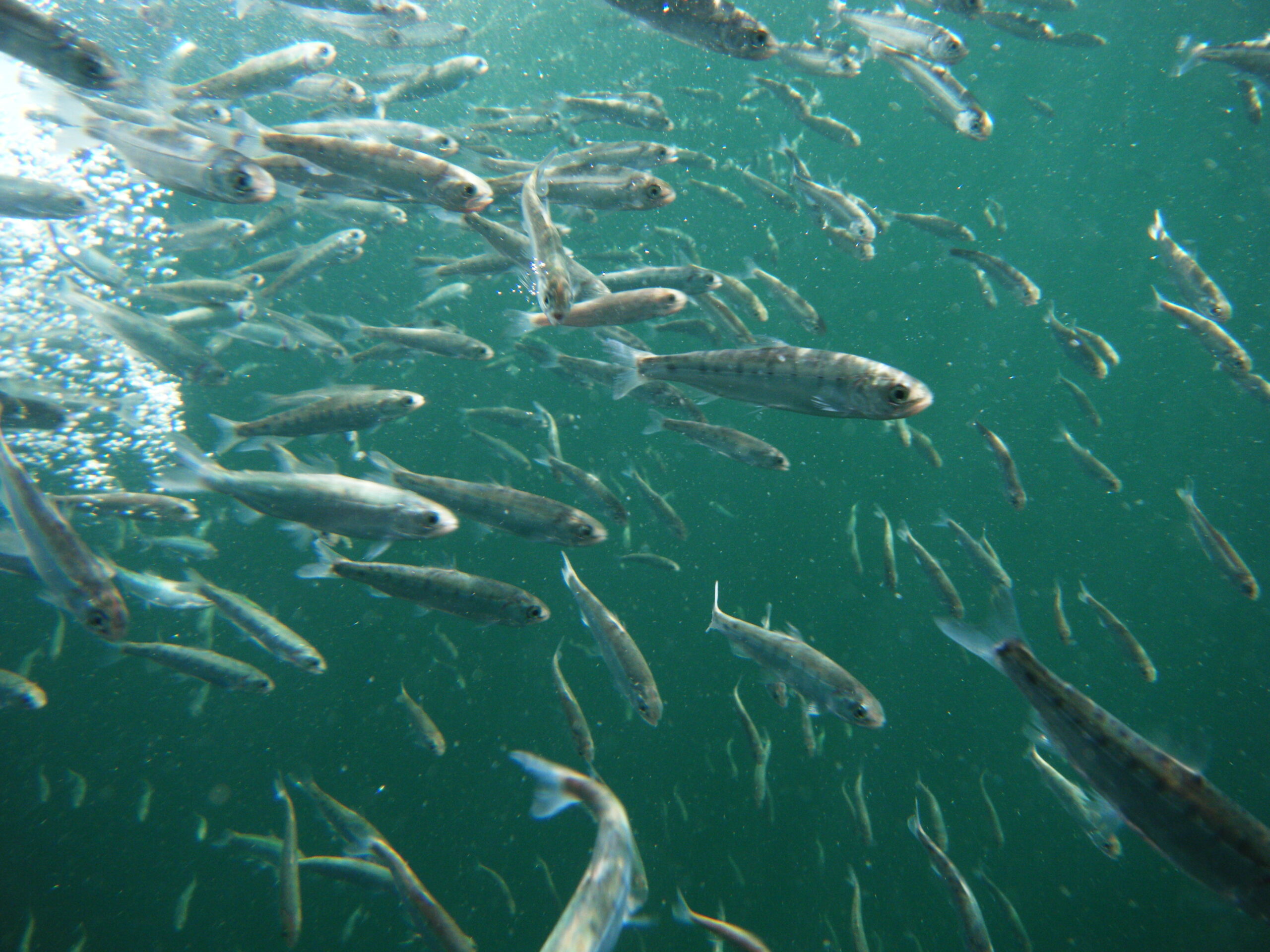
Lake Babine is an important nursery habitat for declining Skeena River sockeye salmon. However, B.C. doesn’t require Glencore Canada to monitor the potential impacts of its mines on the fish. Photo: NOAA Fisheries West Coast / Flickr
Despite the worsening situation, B.C. permits the Bell mine to discharge wastewater with metal concentrations up to 25 times higher than provincial water quality guidelines for the protection of aquatic life into the lake. The province has no guidelines for Granisle, which discharges untreated wastewater into the lake at three sites. At one of these sites, the discharge has copper concentrations that are on average 20 times higher than the provincial guidelines for the protection of aquatic life and nearly 250 times higher than the threshold for negative effects on salmon, according to the report.
The province only requires Glencore Canada to do very sporadic monitoring of Babine Lake water, sediment and fish. Such monitoring is only required once every 10 years at one Bell discharge site and isn’t required at all at some Granisle sites. Sockeye salmon by both mines aren’t monitored.
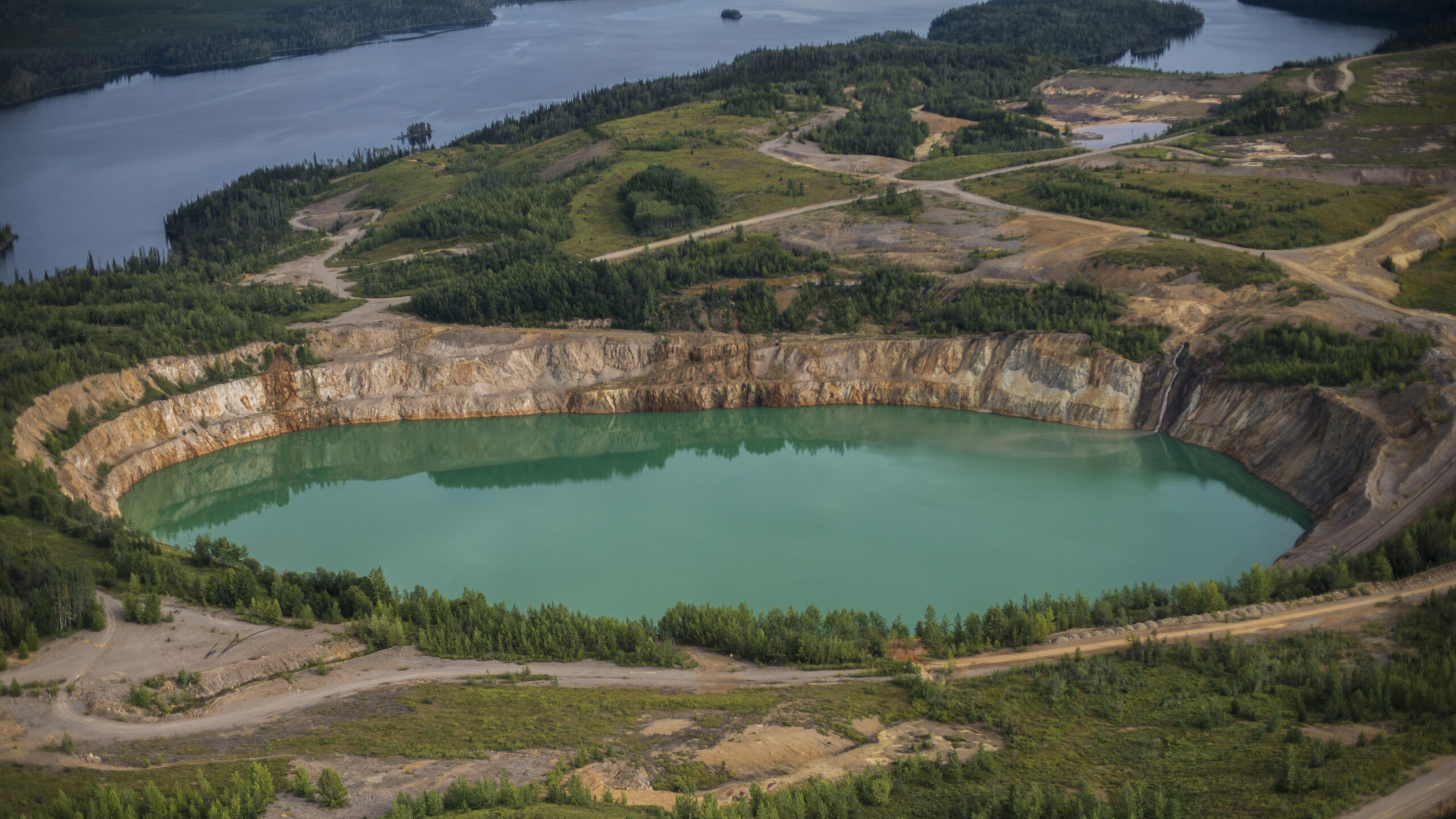
Granisle mine, which is located on an island on Babine Lake, doesn’t have a water treatment facility. When the pit collecting mine-contaminated water eventually fills up, a system will have to be installed and the treated water will then be discharged into the lake. Photo: SkeenaWild Conservation Trust
“We’re in dire straits,” Lake Babine Nation fisheries manager Donna MacIntyre told The Narwhal. “Our wild salmon populations are in the red zone … and [salmon are] the backbone of our culture. These fish are so important to us and basically we’re not monitoring their health.”
The Ministry of Environment and Climate Change Strategy was unable to provide an interview but told The Narwhal in an emailed statement it works with the Ministry of Energy, Mines and Low Carbon Innovation and the B.C. Environmental Assessment Office to manage long-term risks associated with closed mines.
The ministry also said it received the report and is committed to addressing the identified issues.
The Bell and Granisle mines are emblematic of a much bigger problem in B.C. According to a map recently published by SkeenaWild and the BC Mining Law Reform Network, there are 116 known or potentially contaminated mine sites that threaten water, wildlife and communities across the province.
“Our research shows that there’s contaminated mine sites littered across the province,” Greg Knox, executive director at SkeenaWild, told The Narwhal in an interview.
The map shows 173 coal and metal mines, both active and inactive, and includes all of B.C.’s major mines as well as historical mines with high levels of production. The information is based on data from the province, mining companies, regulatory bodies and other sources. The authors said information on the contamination risk of 55 mines sites was not available, but noted “many seem likely to have some contamination concern, given their location and deposit geology.”
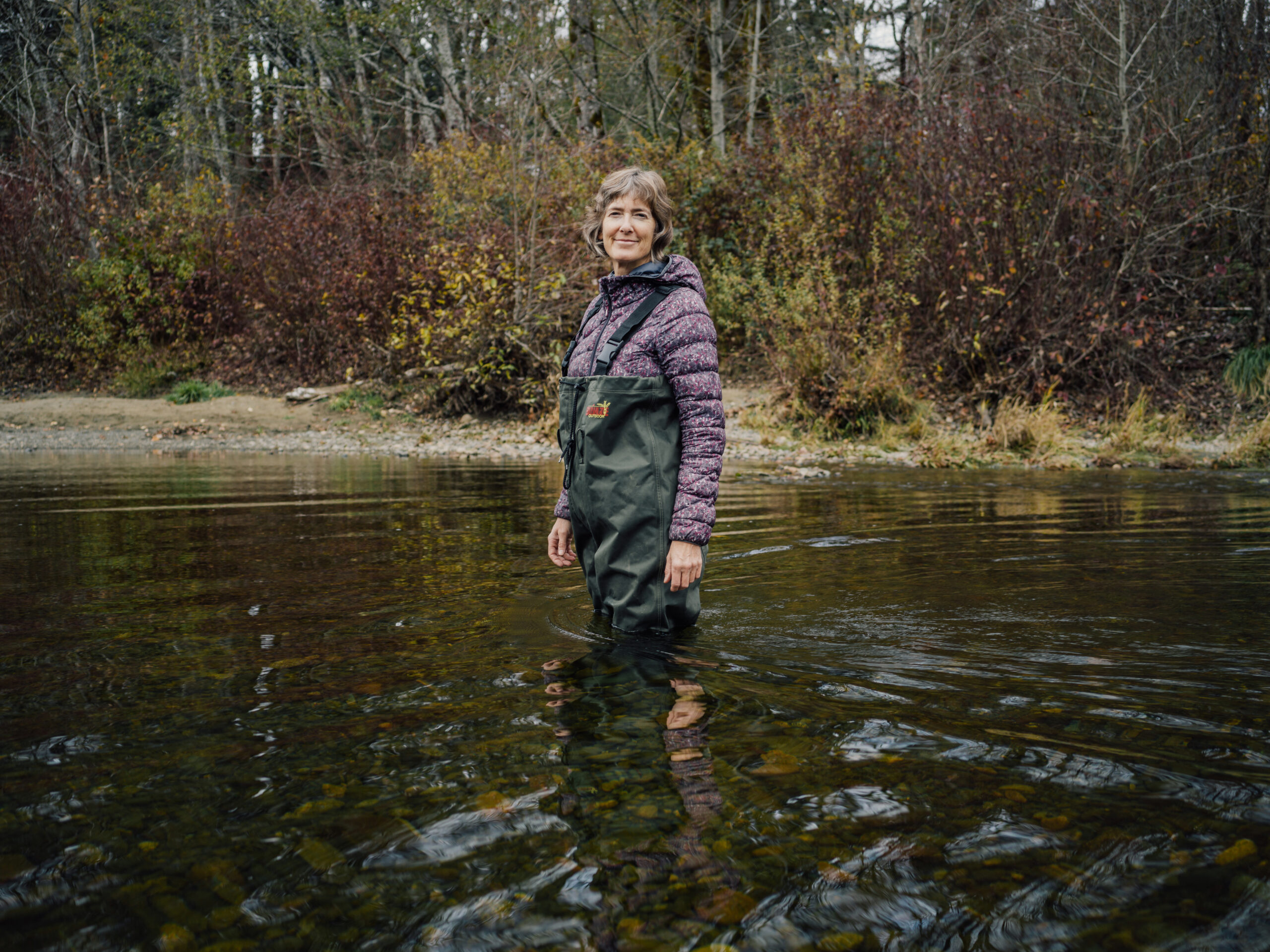
The Mount Washington coal mine on Vancouver Island is one 71 mines on the map where acid rock drainage is a concern. Volunteers like Caroline Hiem have been trying to nurse the polluted Tsolum River back to health for decades. Photo: Taylor Roades / The Narwhal
Acid rock drainage — in which heavy metals and sulfuric acid leach into the water, threatening the ecosystem — is a concern at 71 sites, many of which are likely to encounter water contamination issues even if mitigation efforts are undertaken. The Bell and Granisle mines illustrate that even with water treatment, mine discharges still contain a cocktail of contaminants.
Of the 173 sites on the map, only two have been shown to pose no immediate threat of water contamination.
The map report illustrates the effects of mine pollution by highlighting the situation at several infamous B.C. sites — Tulsequah Chief, Mount Polley, Teck’s coal mines in the Elk Valley and Copper Mountain — all of which have caused significant water pollution.
For instance, the Tulsequah Chief mine has been leaking acid rock drainage into the Taku watershed near the B.C.-Alaska border for more than 60 years and cleanup efforts have been delayed by bureaucracy and the former owner’s receivership proceedings.
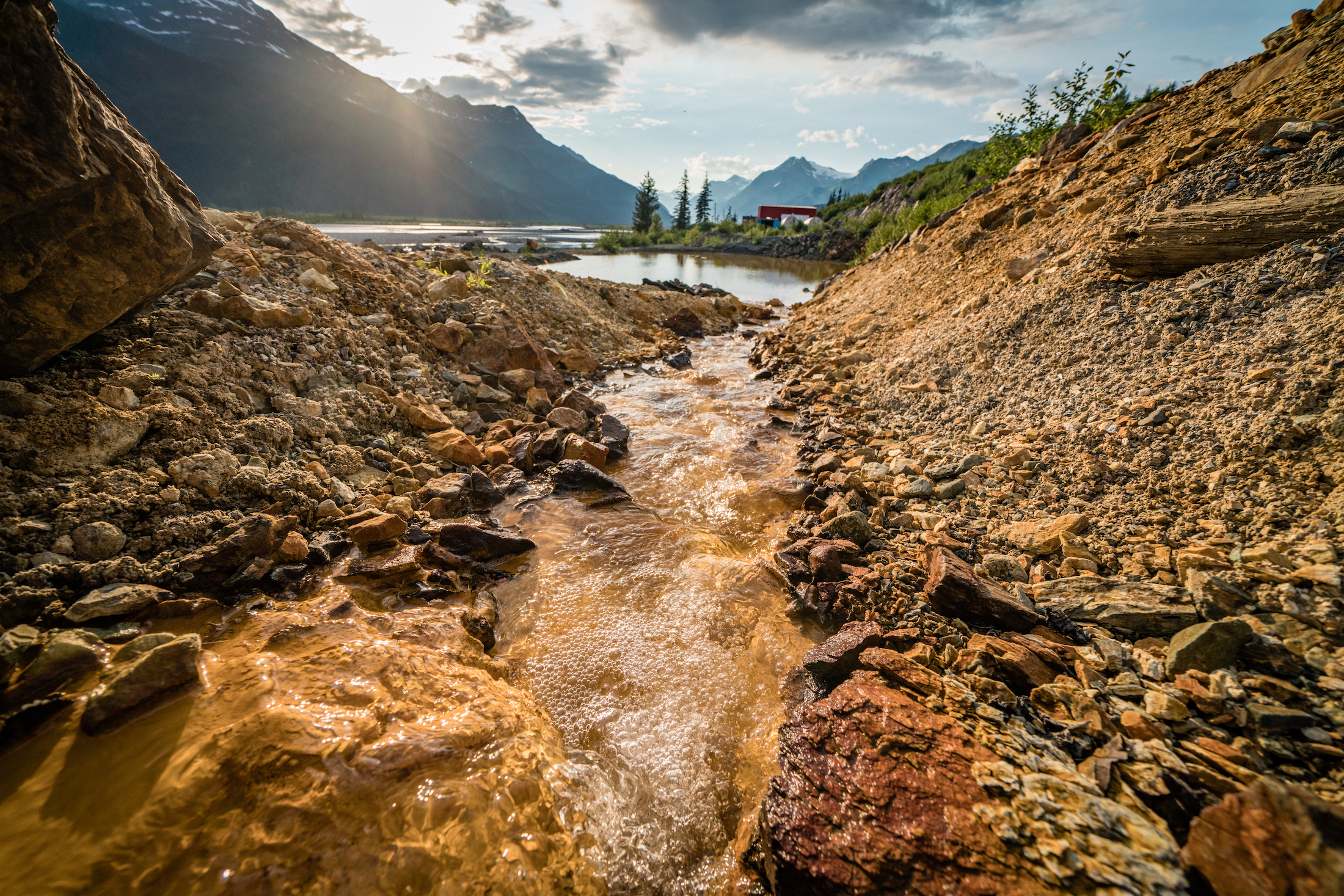
Tulsequah Chief is a relatively small mine, but the estimated cost of cleaning up the site is around $60 million with an additional $1 million every year for maintenance. Photo: Colin Arisman / The Narwhal
Similarly, the Mount Polley mine continues to release wastewater with little or no treatment into Quesnel Lake six and a half years after the tailings pond collapsed, spilling 24 million cubic metres of waste into a creek and the lake, a source of drinking water and a major spawning ground for sockeye salmon. The waste is laden with contaminants up to 800 times higher than the lake’s natural background levels, according to the map report.
Knox said it’s in the best interest of the province to address this problem and start taking action to reduce the pollution.
“We always see the government promoting the industry and touting how clean it is and how well-positioned we are to sell our minerals as clean and responsibly sourced when in fact they have this massive contaminated mine site problem across the province,” he said. “B.C. has a dirty secret, but they don’t want the world to find out about it because it’ll put their whole sales pitch at risk.”
Read more: The transition to renewable energy relies on mining. Can it be done responsibly?
Nikki Skuce, co-chair of the BC Mining Law Reform Network, agreed.
“At the very least we should have public transparency where the problems even are,” she said in an interview. “It’s hard to prioritize sites for cleanup if you don’t know what the problems are.”
Knox said there’s a clear need to at minimum prioritize any known or potential pollution from sites near salmon habitat.
“[Babine Lake] is Canada’s largest sockeye-producing system and if the province can’t even do its due diligence here, then what are they doing across the rest of the province?”
Following the Mount Polley disaster, B.C.’s auditor general produced a damning report about the province’s lack of sufficient regulations in the mining sector.
While the province has addressed some of the recommendations in the report, including launching a collaborative compliance and enforcement division, there are still significant gaps in how the province manages monitoring and pollution at old mine sites.
B.C. requires mining companies to create reclamation plans, which include aquatic monitoring, and have them approved by the government. But the scope and frequency of aquatic monitoring is largely left to the mining companies’ discretion, according to Berchtold.
In some cases, like at the Babine Lake mines, aquatic monitoring programs do not include sampling water, sediment and fish in all potentially impacted areas, nor do they include sampling all potentially impacted species like plankton and aquatic plant life, according to the map report. The Bell and Granisle monitoring plans also don’t include taking sufficient “clean” samples from other parts of the lake to provide baseline data.
“We don’t have the right rules, guidelines, policies or regulations in place to ensure regular, adequate monitoring and guidelines for what reclamation actually looks like,” Skuce said.
Berchtold agreed and said the province gives mining companies a long leash when it comes to long-term maintenance of a closed mine site.
“The government doesn’t necessarily take enough of a stance on what monitoring should look like,” she said. “They defer to the professionals that are hired by the company and obviously the company has an interest to not look too heavily into whether they’re causing negative impacts because they don’t want to deal with the cleanup costs and the negative publicity that might come with that.”
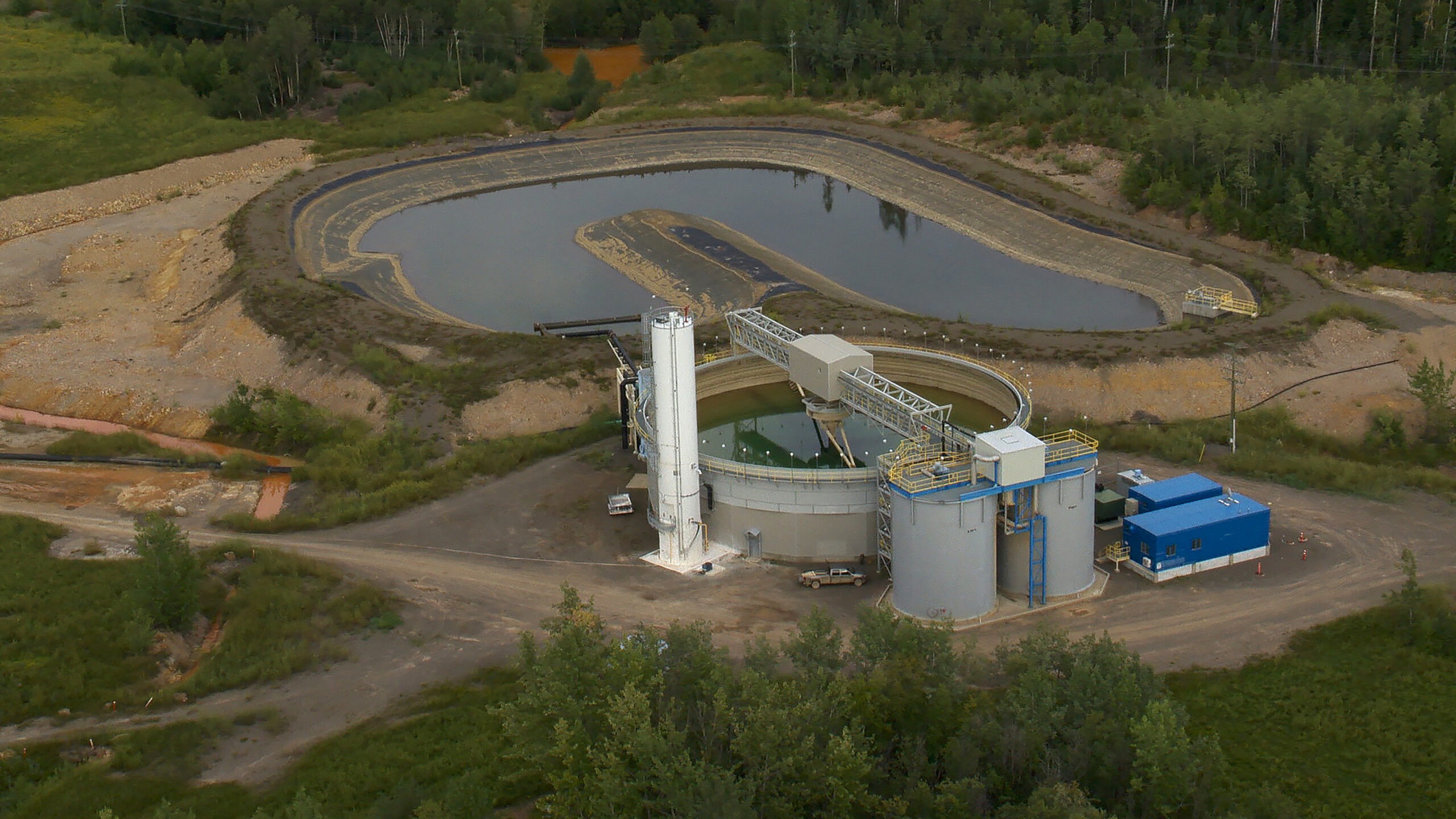
The Bell mine, which has one water treatment facility on site, was allowed to discharge about 50,000 cubic metres of untreated water directly into the lake in 2018. That’s roughly enough to fill 20 Olympic-sized swimming pools. Photo: SkeenaWild Conservation Trust
Companies are also required to submit annual reports to ensure they are in compliance with provincial regulations and the government periodically inspects sites. However, as Skuce said,
“the standards for … government inspection are very vague. The policy guidelines regarding old mines is that they should be inspected ‘from time to time.’ What does that mean? Who’s getting to decide?”
The province also allows pollution, like the discharge of elevated levels of copper, at old mine sites.
While the permits regulating waste discharge at the Bell mine set limits on contaminants like copper and zinc, they don’t regulate other contaminants like aluminum, cadmium and selenium. The province also allows for unregulated discharges at the Granisle mine and hasn’t set any limits on the amount of contaminants in the untreated discharge entering the lake.
Not only that, the fees stipulated under B.C.’s Environmental Management Act for this pollution are insufficient, Berchtold said.
The cost to Glencore for putting all this copper into the lake is a paltry $330.62 per tonne. And for sulphates, which Berchtold said are in some cases being discharged at 650 times above the lake’s natural background levels, the company only has to pay $4.85 per tonne.
“It’s obviously not enough,” said Berchtold, explaining that a mining company taking care of a closed, unprofitable mine needs more incentive than the loss of a few hundred bucks to invest in costly improvements to its water treatment facilities.
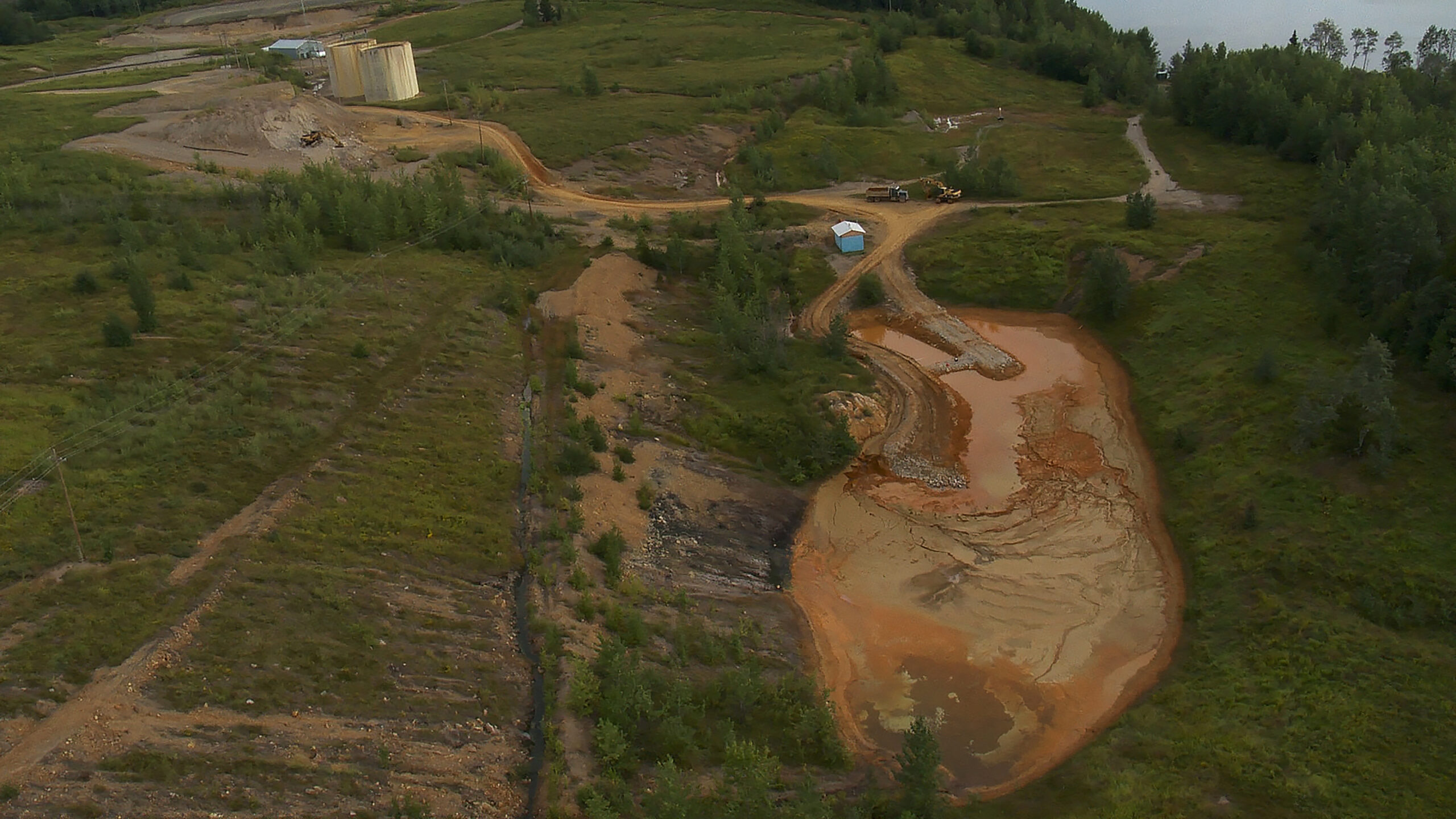
B.C. allows Glencore Canada to discharge nearly three-quarters of a tonne of copper every year from just one of its discharge outlets at the Bell mine. Photo: SkeenaWild Conservation Trust
Berchtold said she’s troubled by a lack of government action based on what companies are reporting.
“[Glencore Canada] say flat out there are elevated levels of this such-and-such metal in the sediment and in the fish tissue, but I haven’t seen any evidence that anyone within the Ministry of Environment is actually reviewing these reports, looking at the data that’s been collected and addressing the fact that there are impacts occurring.”
As the mining map report illustrated, the nature and scale of contamination at many closed and abandoned mine sites is unknown and provincial regulations around gathering data allow potential pollution to continue indefinitely.
Knox said their work on the Bell and Granisle mines is just the start. “We’re going to continue our work to investigate individual mines to see if they have adequate monitoring and pollution problems.”
The Babine Lake report included a series of recommendations to address the problems at the mines, some of which can be implemented at mines across the province.
It said the province should require permits for all discharges of treated and untreated wastewater, including the unregulated discharges from the Granisle mine. It recommended B.C. establish clear thresholds for the levels of contaminants that will negatively impact species based on the best available science and present a clear plan for what happens if those thresholds are exceeded. It also pointed out that aquatic monitoring programs should include all areas that are potentially impacted, and companies should sample water, sediment and fish tissue from elsewhere in the lake for comparison.
The report also recommended the province require companies to monitor the effects of the mine discharges on other parts of the aquatic ecosystem such as plankton, the main food source for juvenile sockeye.
Importantly, it said salmon should be included in monitoring programs.
MacIntyre said this is a priority.
“If we’re not looking at these little babies in our nursery lake, looking at their health and the effects of all of this mine discharge, by the time we figure anything out, it’s going to be too late,” she said. “I think that we could start now — and maybe we’ll have a bit of a hope.”
Berchtold said the first step is to find out if the fish are using the area around the mine sites. If sockeye do congregate in the areas where the mines are discharging effluent, she said catching the fish to take samples and then releasing them would be a simple and effective way to determine if the water quality is impacting the salmon’s ability to navigate.
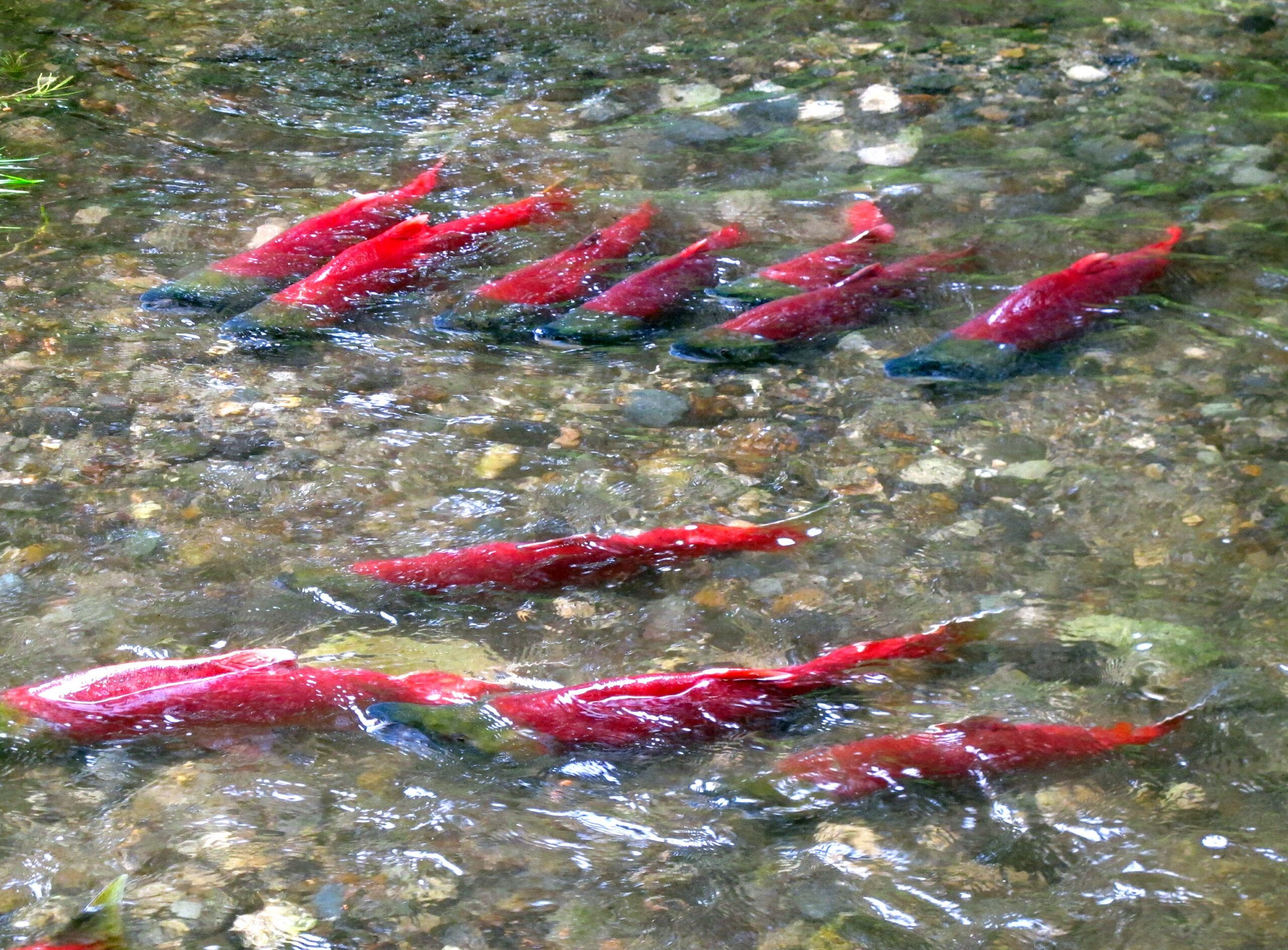
The Skeena sockeye population has plummeted in the past century and members of the Lake Babine Nation are worried the mines on the lake are putting the fish at even greater risk. However, due to a lack of monitoring, they have more questions than answers. “How are we going to protect the fish if we’re not monitoring and we don’t know what’s going wrong?” Lake Babine Nation fisheries manager Donna MacIntyre asks. Photo: Katrina Liebich for USFWS / Flickr
In an emailed statement to The Narwhal, Glencore Canada argued that because sockeye migrate out of the lake and spend most of their lives in the ocean, it’s impossible to evaluate the potential impacts of the mines’ discharges on them, but it said it will consider the report’s recommendations when reviewing its aquatic monitoring program.
“In the future, Glencore would be happy to report on any non-lethal information for sockeye salmon smolt that may be caught as part of our aquatic monitoring program,” the statement said.
While these recommendations would strengthen environmental protection at old mine sites, they don’t address the fact that the company is still in charge of assessing its own impacts, which, as Berchtold pointed out, is a conflict of interest.
Other organizations also have ideas of how to address the problem.
A 2019 report from the BC Mining Law Reform Network made 69 detailed recommendations to the province to better protect the public and the environment from mines. Those recommendations include expanding civil liability for companies to ensure they pay for pollution, mandating clear risk-based inspection policies for all mines including closed and abandoned sites and requiring independent analyses of water treatment systems that take into account the full long-term costs of a mine’s lifecycle.
In July, the First Nations Energy and Mining Council and the University of Victoria Environmental Law Centre released a report calling on the province to support an Indigenous guardians network, which would provide First Nations across the province the training and resources needed to monitor resource-based activity on their territories.
That monitoring would include Indigenous guidance on activities like mine closure, reclamation, monitoring and waste management.
MacIntyre welcomed the idea.
“We’re the caretakers of the land. We’re the stewards of Babine Lake.”
Updated Feb. 6, 2021, at 8:40 a.m.: this story was updated to clarify that the Bell and Granisle mines have been polluting Babine Lake since they were operational.
Get the inside scoop on The Narwhal’s environment and climate reporting by signing up for our free newsletter. Angello Johnson’s shoulders burn, and his arms...
Continue reading
First Nations are leading efforts to make sure lake sturgeon can find a home in...

We’re excited to share that an investigation by The Narwhal is a finalist for the...

A new documentary, Nechako: It Will Be a Big River Again, dives into how two...
